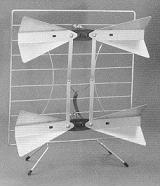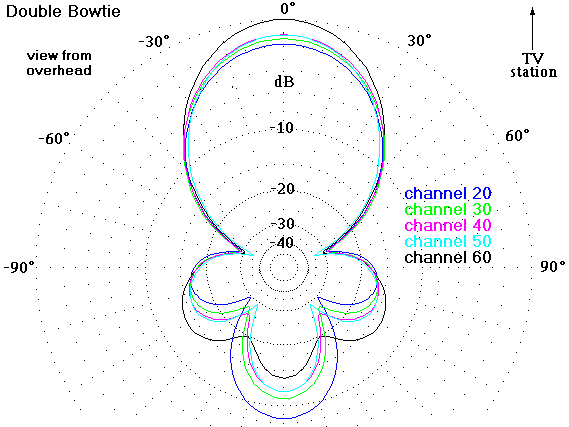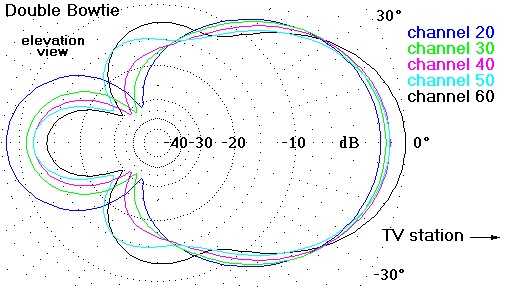8/13/08
The Double Bowtie



When I
decided to simulate this antenna, all I had was this photo of it. So I assumed it was 16 inches wide, like the
4221, and I scaled all of its dimensions accordingly. The simulation results were fantastic. It blew away every other indoor antenna. It even rivaled some outdoor antennas.
Unfortunately
the real antenna is only 12.5 inches wide.
It is great above channel 40. But
it is just too small for the lower channels.
If you are
using one of these for channels below 30 and getting marginal results, wrap
some aluminum foil around the four elements ends to extend them by about an
inch. I think you will see a nice
improvement. (Two inches would be even
better, but will hurt the higher channels.)
The
double-bow is made in China and has been sold by Channel Master as the
CM-4149. It used to be carried in Radio
Shack stores as the 15-623.
The
double-bow comes with 300W
twin-lead ribbon cable. For UHF, ribbon
cable must be kept one inch from anything metal and not touching any
substantial thing that is plastic.
Otherwise a portion of the signal gets reflected and retransmitted. Ribbon cable is OK if you can set the antenna
on the back edge of the TV and dangle the wire so that it doesn’t touch
anything. But for most people this is
not convenient. Many people who buy this
antenna replace the wire with a balun and some 75 ohm coax. You will need soldering equipment to do
that. Eventually the elements will end
up slightly bent, the result of the antenna constantly getting knocked over.
There are 16”
versions of this antenna: The DB-2 by
antennasdirect.com and the 4220 by Channel Master. They are the best indoor UHF antennas
available. If you are considering a
double-bow, you should probably buy the DB-2 or 4220 instead. However the DB-2 and 4220 are outdoor
antennas (small enough for indoor use) and lack a stand. If you buy one for indoor use, you will have
to invent a stand that will hold it up.
This page is part of “An HDTV Primer”, which
starts at www.hdtvprimer.com